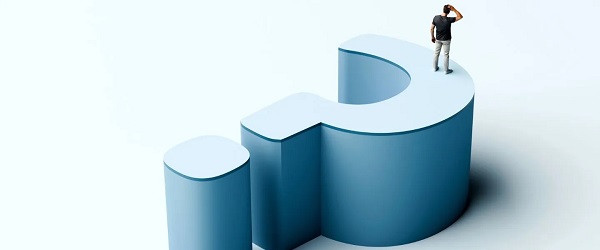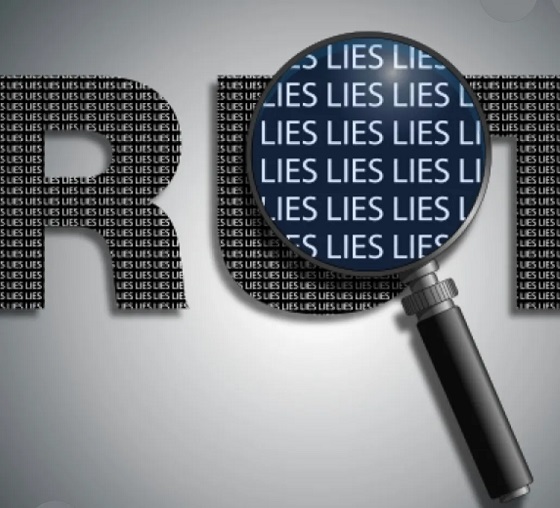Alberta
Putting an end to the photo radar cash cow

Alberta’s government is ending the photo radar cash cow, eliminating areas where photo radar is used to generate revenue with no traffic safety benefit.
Many Albertans have expressed growing frustration with photo radar, questioning its focus on revenue rather than safety. In response to these concerns, Alberta’s government paused the introduction of new photo radar equipment and locations on Dec. 1, 2019. Now, after thorough analysis and consultation, Alberta’s government is taking bold steps to restore public trust.
Effective April 1, 2025, ticketing on numbered provincial highways will end as photo radar will be restricted to school, playground and construction zones. Intersection safety devices in Alberta will also be restricted to red light enforcement only, ending the ‘speed-on-green’ ticketing function.
Municipalities will also be able to request that the province approve additional photo radar locations on an exceptional basis, for high collision areas and where other safety measures cannot be implemented effectively. These types of exceptions will be subject to an audit every two years to assess the effectiveness of photo radar at the site in reducing collisions.
“This is great news for Alberta drivers. These changes will once and for all kill the photo radar cash cow in Alberta. Albertans can be confident that photo radar will only be used to improve traffic and roadside worker safety and not to make money.”
The next step for government is to review every existing photo radar site in the province over the next four months. As part of that review, those that are deemed ineffective, or outside of a school, playground, or construction zone, will be removed. This is expected to reduce the current 2,200 approved sites by 70 per cent, which would also better align the amount of photo radar with other provinces. Currently, there are about 70 per cent more photo radar sites used in 24 Alberta municipalities than the next highest province. Allowing these changes to be implemented over the next four months provides municipalities time to transition, update equipment and adjust contracts with vendors.
“I’m happy to see the province focusing photo radar on playground and construction zones. We need to prioritize safety where it matters most – protecting our children and workers on Calgary’s roads. I’m proud to support this vital step toward safer communities.”
“It is vital we maintain safety where it matters most—around our schools, playgrounds and construction zones. These are areas where enforcement can genuinely protect lives, not just generate revenue. With this new policy change, we’ll see more officers back in neighbourhoods and that visibility will help tackle the growing issues of crime and disorder – a top priority for Edmontonians and Albertans.”
“The Minister’s announcement will ensure that the use of photo radar is focused on enhancing traffic safety on high-risk roadways. RMA looks forward to learning how current photo radar sites will be assessed and is optimistic that this will result in an approach that supports safer roads without unfairly penalizing drivers.”
Municipalities will be encouraged to use traffic-calming measures to improve traffic safety, including speed warning signs, speed tables (large flat speed bump), public education campaigns and other tools designed to improve traffic safety. The province will also help make roads safer by providing municipalities with support to reengineer roads and intersections that have been proven to be unsafe.
Quick facts
- Alberta first introduced photo radar in 1987.
- All photo radar sites were removed from ring roads in Calgary and Edmonton on December 1, 2023.
- The government engaged with municipalities in June and August 2024 about photo radar and specifically to discuss solutions to eliminate ‘fishing holes.’
- The top five revenue-generating sites from last year are:
- Strathcona County – Baseline Road/17 St., 52,558 tickets (144/day) $5,956,573 in fines
- Edmonton – Gateway Blvd./34 Ave., 23,977 tickets (144/day) $2,717,393 in fines
- Edmonton – 170 St./118 Ave., 20,241 tickets (55/day) $2,293,980 in fines
- Calgary – Beddington Tr./Country Hills Blvd., 19,337 tickets (53/day) $2,173,167 in fines
- Edmonton – 127 St./126 Ave., 18,705 tickets (51/day), $2,119,900 in fines
Related information
Alberta
Premier Smith: Canadians support agreement between Alberta and Ottawa and the major economic opportunities it could unlock for the benefit of all

From Energy Now
By Premier Danielle Smith
Get the Latest Canadian Focused Energy News Delivered to You! It’s FREE: Quick Sign-Up Here
If Canada wants to lead global energy security efforts, build out sovereign AI infrastructure, increase funding to social programs and national defence and expand trade to new markets, we must unleash the full potential of our vast natural resources and embrace our role as a global energy superpower.
The Alberta-Ottawa Energy agreement is the first step in accomplishing all of these critical objectives.
Recent polling shows that a majority of Canadians are supportive of this agreement and the major economic opportunities it could unlock for the benefit of all Canadians.
As a nation we must embrace two important realities: First, global demand for oil is increasing and second, Canada needs to generate more revenue to address its fiscal challenges.
Nations around the world — including Korea, Japan, India, Taiwan and China in Asia as well as various European nations — continue to ask for Canadian energy. We are perfectly positioned to meet those needs and lead global energy security efforts.
Our heavy oil is not only abundant, it’s responsibly developed, geopolitically stable and backed by decades of proven supply.
If we want to pay down our debt, increase funding to social programs and meet our NATO defence spending commitments, then we need to generate more revenue. And the best way to do so is to leverage our vast natural resources.
At today’s prices, Alberta’s proven oil and gas reserves represent trillions in value.
It’s not just a number; it’s a generational opportunity for Alberta and Canada to secure prosperity and invest in the future of our communities. But to unlock the full potential of this resource, we need the infrastructure to match our ambition.
There is one nation-building project that stands above all others in its ability to deliver economic benefits to Canada — a new bitumen pipeline to Asian markets.
The energy agreement signed on Nov. 27 includes a clear path to the construction of a one-million-plus barrel-per-day bitumen pipeline, with Indigenous co-ownership, that can ensure our province and country are no longer dependent on just one customer to buy our most valuable resource.
Indigenous co-ownership also provide millions in revenue to communities along the route of the project to the northwest coast, contributing toward long-lasting prosperity for their people.
The agreement also recognizes that we can increase oil and gas production while reducing our emissions.
The removal of the oil and gas emissions cap will allow our energy producers to grow and thrive again and the suspension of the federal net-zero power regulations in Alberta will open to doors to major AI data-centre investment.
It also means that Alberta will be a world leader in the development and implementation of emissions-reduction infrastructure — particularly in carbon capture utilization and storage.
The agreement will see Alberta work together with our federal partners and the Pathways companies to commence and complete the world’s largest carbon capture, utilization and storage infrastructure project.
This would make Alberta heavy oil the lowest intensity barrel on the market and displace millions of barrels of heavier-emitting fuels around the globe.
We’re sending a clear message to investors across the world: Alberta and Canada are leaders, not just in oil and gas, but in the innovation and technologies that are cutting per barrel emissions even as we ramp up production.
Where we are going — and where we intend to go with more frequency — is east, west, north and south, across oceans and around the globe. We have the energy other countries need, and will continue to need, for decades to come.
However, this agreement is just the first step in this journey. There is much hard work ahead of us. Trust must be built and earned in this partnership as we move through the next steps of this process.
But it’s very encouraging that Prime Minister Mark Carney has made it clear he is willing to work with Alberta’s government to accomplish our shared goal of making Canada an energy superpower.
That is something we have not seen from a Canadian prime minister in more than a decade.
Together, in good faith, Alberta and Ottawa have taken the first step towards making Canada a global energy superpower for benefit of all Canadians.
Danielle Smith is the Premier of Alberta
Alberta
A Memorandum of Understanding that no Canadian can understand

From the Fraser Institute
The federal and Alberta governments recently released their much-anticipated Memorandum of Understanding (MOU) outlining what it will take to build a pipeline from Alberta, through British Columbia, to tidewater to get more of our oil to markets beyond the United States.
This was great news, according to most in the media: “Ottawa-Alberta deal clears hurdles for West Coast pipeline,” was the top headline on the Globe and Mail’s website, “Carney inks new energy deal with Alberta, paving way to new pipeline” according to the National Post.
And the reaction from the political class? Well, former federal environment minister Steven Guilbeault resigned from Prime Minister Carney’s cabinet, perhaps positively indicating that this agreement might actually produce a new pipeline. Jason Kenney, a former Alberta premier and Harper government cabinet minister, congratulated Prime Minister Carney and Premier Smith on an “historic agreement.” Even Alberta NDP Leader Naheed Nenshi called the MOU “a positive step for our energy future.”
Finally, as Prime Minister Carney promised, Canada might build critical infrastructure “at a speed and scale not seen in generations.”
Given this seemingly great news, I eagerly read the six-page Memorandum of Understanding. Then I read it again and again. Each time, my enthusiasm and understanding diminished rapidly. By the fourth reading, the only objective conclusion I could reach was not that a pipeline would finally be built, but rather that only governments could write an MOU that no Canadian could understand.
The MOU is utterly incoherent. Go ahead, read it for yourself online. It’s only six pages. Here are a few examples.
The agreement states that, “Canada and Alberta agree that the approval, commencement and continued construction of the bitumen pipeline is a prerequisite to the Pathways project.” Then on the next line, “Canada and Alberta agree that the Pathways Project is also a prerequisite to the approval, commencement and continued construction of the bitumen pipeline.”
Two things, of course, cannot logically be prerequisites for each other.
But worry not, under the MOU, Alberta and Ottawa will appoint an “Implementation Committee” to deliver “outcomes” (this is from a federal government that just created the “Major Project Office” to get major projects approved and constructed) including “Determining the means by which Alberta can submit its pipeline application to the Major Projects Office on or before July 1, 2026.”
What does “Determining the means” even mean?
What’s worse is that under the MOU, the application for this pipeline project must be “ready to submit to the Major Projects Office on or before July 1, 2026.” Then it could be another two years (or until 2028) before Ottawa approves the pipeline project. But the MOU states the Pathways Project is to be built in stages, starting in 2027. And that takes us back to the circular reasoning of the prerequisites noted above.
Other conditions needed to move forward include:
The private sector must construct and finance the pipeline. Serious question: which private-sector firm would take this risk? And does the Alberta government plan to indemnify the company against these risks?
Indigenous Peoples must co-own the pipeline project.
Alberta must collaborate with B.C. to ensure British Columbians get a cut or “share substantial economic and financial benefits of the proposed pipeline” in MOU speak.
None of this, of course, addresses the major issue in our country—that is, investors lack clarity on timelines and certainty about project approvals. The Carney government established the Major Project Office to fast-track project approvals and provide greater certainty. Of the 11 project “winners” the federal government has already picked, most either already had approvals or are already at an advanced stage in the process. And one of the most important nation-building projects—a pipeline to get our oil to tidewater—hasn’t even been referred to the Major Project Office.
What message does all this send to the investment community? Have we made it easier to get projects approved? No. Have we made things clearer? No. Business investment in Canada has fallen off a cliff and is down 25 per cent per worker since 2014. We’ve seen a massive outflow of capital from the country, more than $388 billion since 2014.
To change this, Canada needs clear rules and certain timelines for project approvals. Not an opaque Memorandum of Understanding.
-

 Business2 days ago
Business2 days agoWhy Does Canada “Lead” the World in Funding Racist Indoctrination?
-

 Business2 days ago
Business2 days agoLoblaws Owes Canadians Up to $500 Million in “Secret” Bread Cash
-

 Dan McTeague2 days ago
Dan McTeague2 days agoWill this deal actually build a pipeline in Canada?
-

 Media2 days ago
Media2 days agoThey know they are lying, we know they are lying and they know we know but the lies continue
-

 Censorship Industrial Complex1 day ago
Censorship Industrial Complex1 day agoUS Condemns EU Censorship Pressure, Defends X
-

 Economy10 hours ago
Economy10 hours agoAffordable housing out of reach everywhere in Canada
-

 Focal Points2 days ago
Focal Points2 days agoThe West Needs Bogeymen (Especially Russia)
-

 Banks2 days ago
Banks2 days agoTo increase competition in Canadian banking, mandate and mindset of bank regulators must change





